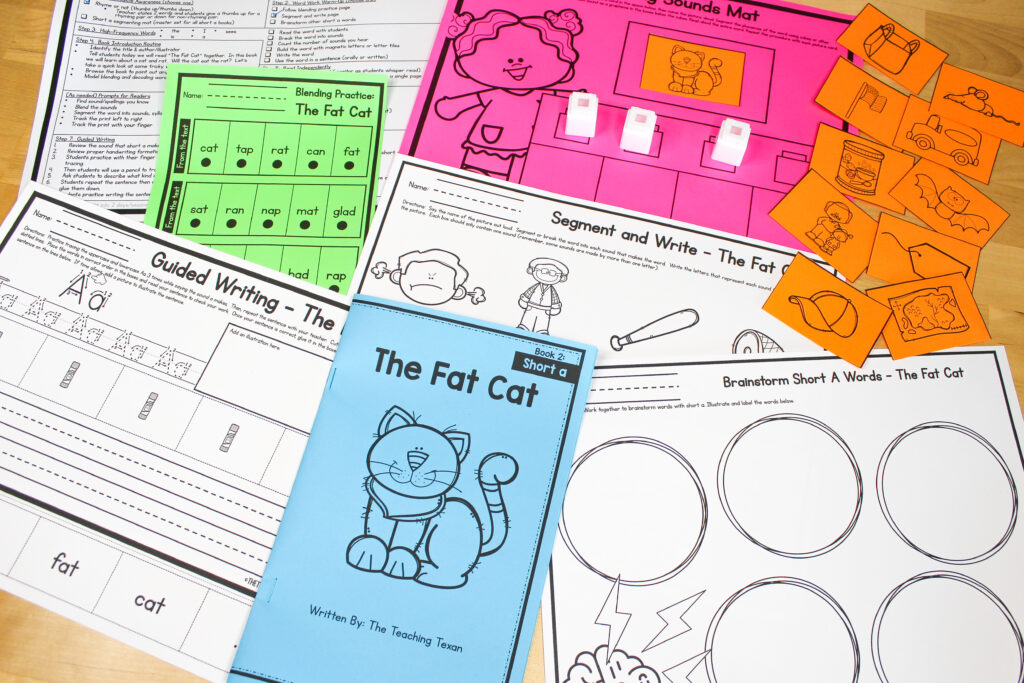How to Effectively Use Decodable Readers
We’ve got a solid understanding of why we should be using decodable books to teach young readers – they can be aligned with the phonetic patterns you’ve taught and they help us teach students to attend to all letters in a word when reading instead of guessing at words.
But, even when we know something is best practice it doesn’t necessarily help us to implement it. That’s the goal of this post, friends!
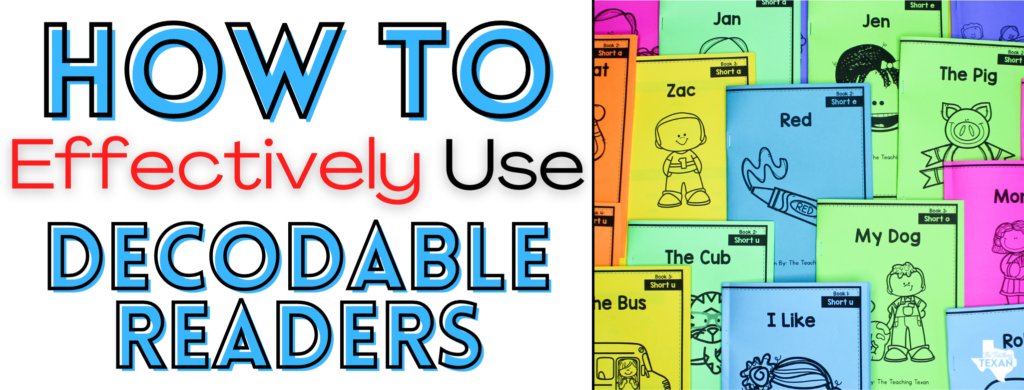
I’m going to break down a simple to follow small group reading plan that you can use right away so you can stop spending tons of time wondering how to use decodable texts in a small group lesson.
And bonus… you’ll also save time planning! Stay with me until the end because I’ve got a free lesson plan, decodable book, and before/after reading activity for YOU!
So the first thing to consider is what decodable text is right for each of your students – and no, your whole class won’t be reading the same decodable.
You’ll want to look at a few things as a pre-assessment such as…
- Phonetic knowledge (based on what has been taught in class AND what the student may have already learned or picked up on)
- Blending ability
- Heart word knowledge (aka tricky words)
With these 3 things assessed and in mind, you’ll be able to easily select a decodable that aligns right where each student is.
Now lets jump into the lesson routine I like to follow with students who are working in decodable texts.
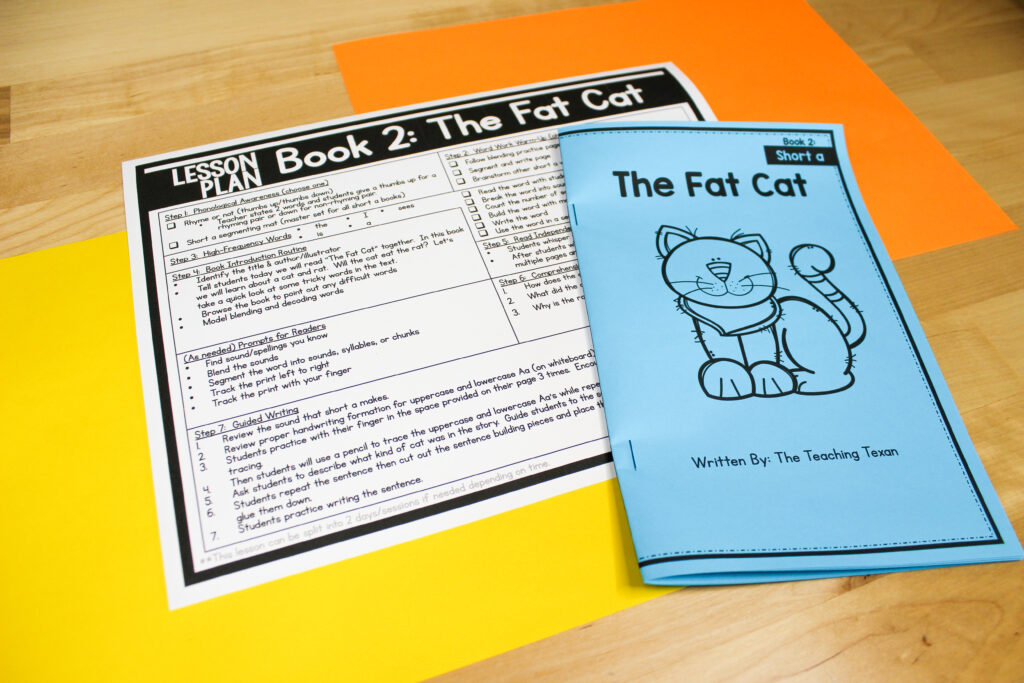
I like to start each lesson with phonological awareness practice. This can be something super quick and is likely very low prep given the nature of phonological awareness.
Something simple like a thumbs up or down if pairs of words rhyme or thumbs up or down if pairs of words start with the same beginning sound is quick and effective.
You can also have students practice segmenting all of the sounds in a word using a segmenting mat / Elkonin boxes and manipulatives.
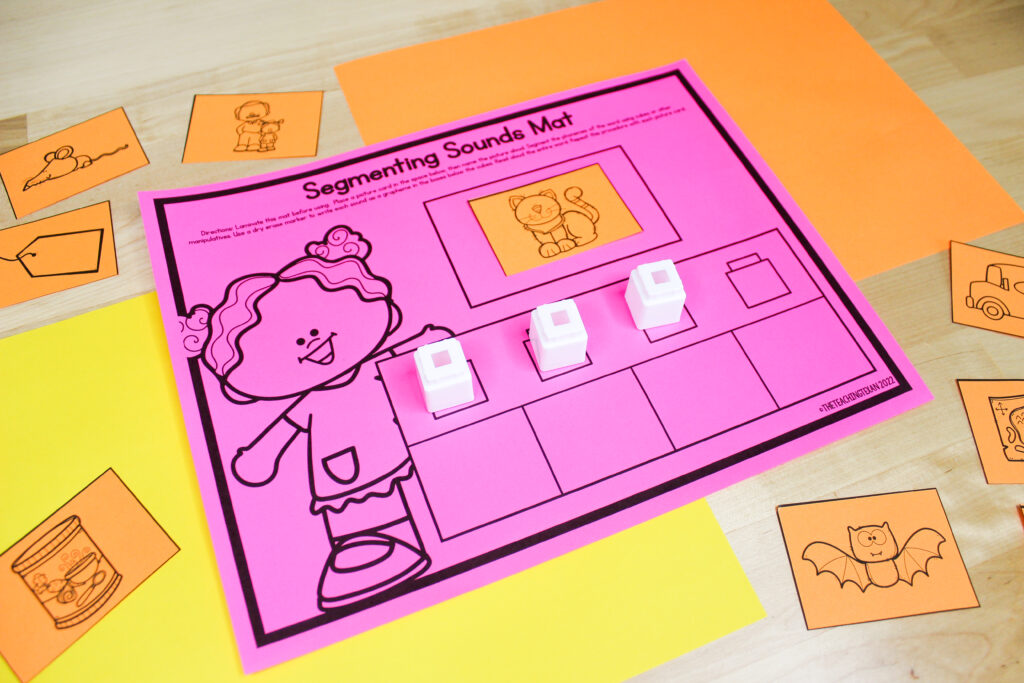
After that, we move into our word work portion of the lesson.
I usually cycle between a few activities for this. We will either follow a blending practice page that is directly aligned with the words we’ll be reading in our decodable, segmenting sounds in a word and writing the symbols (letters) that represent each sound OR brainstorming words that fit the phonetic pattern we’ll be focusing on in our decodable.
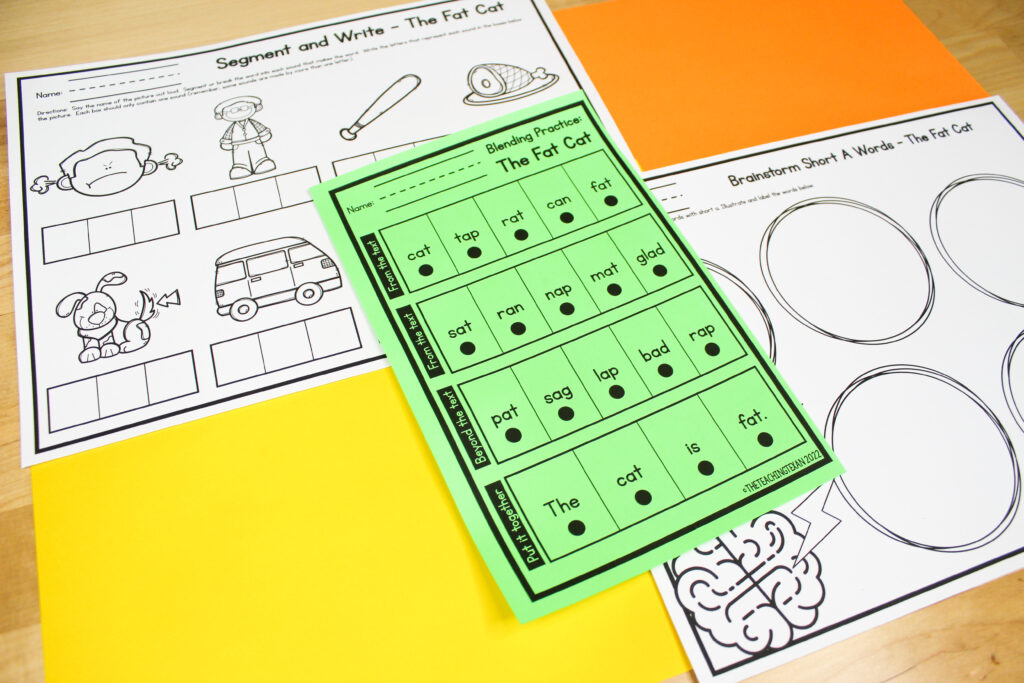
I think it’s worth noting that aligning word work practice with the words in your text is crucial so that it’s not just isolated practice. Students need to then encounter words just like these in the text they are reading for authentic practice.
Up next is a review OR introduction to high-frequency words we’ll find in the text. I like to read the word to students, segment the sounds together, count the number of sounds we hear, build the word with magnetic letters, write the word on a white board then use it in a sentence.
With our brains primed and ready for our text I then introduce the decodable for the day and give a brief (one sentence) synopsis of what the book is about.
Sometimes we’ll take a look through the text and find the high-frequency words we practiced or some of the words that follow the phonetic pattern we practiced during word work.
Students will read independently while I listen in and offer prompts as needed. If a student finishes early, I have him/her either read today’s text a second time to work on fluency OR read a text from a previous lesson, again to work on fluency.
Our small group lesson wouldn’t be complete without some comprehension questions! Although decodables don’t generally have a very deep story line, we can still focus on comprehension and helping students learn to locate where the answer to a question is in the text.
We wrap up our lesson with guided writing. I like to once again focus on the phonics pattern from the decodable and usually select a sentence that answers one of the comprehension questions I asked.
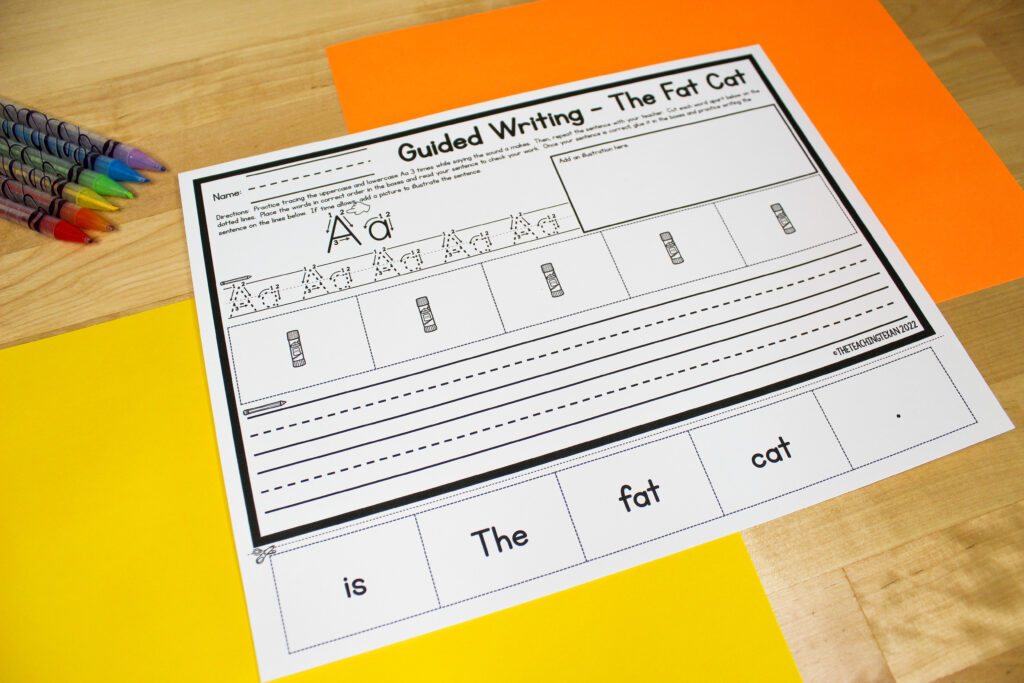
Students repeat the sentence out loud, count the number of words, build the sentence, then write the sentence and illustrate it.
So there you have it! A lesson plan flow that actually work and is easy to follow. I hope that this overview has been super helpful for you! I’d love to share a FREE lesson plan and full set of lesson activities – including a free decodable reader – with you!
Simply drop your name and email below and we’ll email it right to you! Don’t forget to check SPAM as sometimes our emails end up there.

